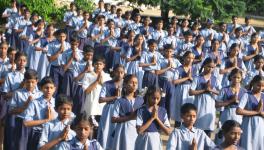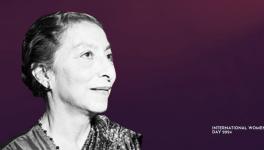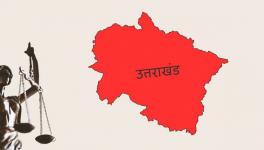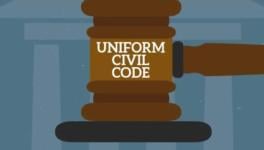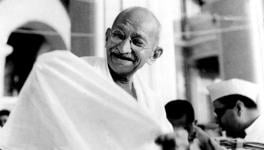Why Women Need a UCC that Stops Patriarchy
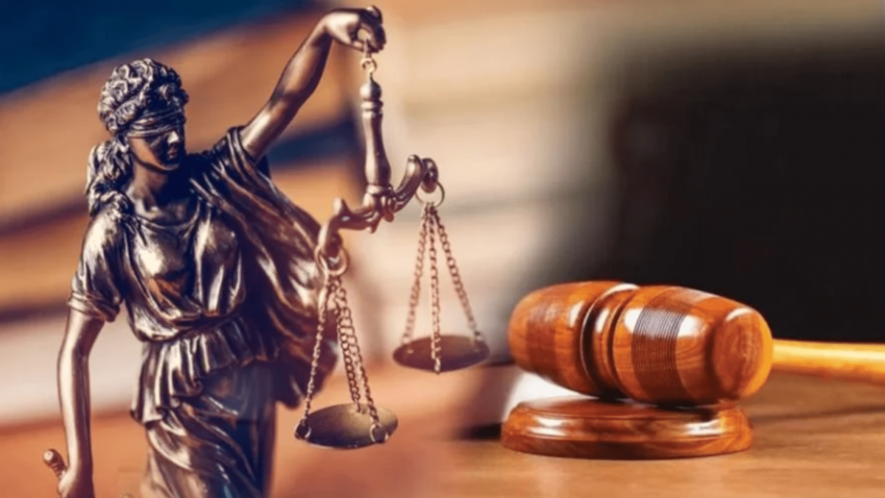
The controversies surrounding the Uniform Civil Code have once again gripped the country. Much of these are fuelled by misogynist men, women with little or no feminist consciousness, and political leaders driven by lust for power in electoral politics.
In the process, minority rights are pitted against women’s rights; human rights are used to justify the oppression of women and tribal people’s rights are used to justify inequality and discrimination within tribal societies, even matrilineal ones.
Both women’s rights and human rights are being weaponised without the slightest bit of concern for the injustice and oppression of women living in patriarchal societies. And there are no societies on earth which are not patriarchal—the question is of only degree.
I should straight away disclose that in 1986, I published a book called Demystification of Law for Women, arguing for a uniform civil code which guaranteed equal rights for men and women. I stand by every word in that book.
The time of its publication was in the middle of the controversy which erupted following the Supreme Court judgement in the Shah Bano case. Many people warned me that “Muslims” would attack me. I do not remember a single public objection to the book, and an NGO in Bangladesh published its Bangla version.
The book began by stating that religion—all religions—and family were the two institutions which strengthened and perpetuated double standards of values, one for men and another for women. And the law is used to mystify this oppression.
Patriarchy and the Law
All laws, from international human rights standards to the Indian Constitution and domestic law, are rooted in patriarchy. This is true for tribal customary laws and tribal jurisprudence. There may be a difference in the degree of oppression and denial of equality and equity, but that is all.
It is only a deeply patriarchal society which can justify allowing a Member of Parliament, accused by top sportswomen of sexual harassment, to continue in his posts and as a party member while the case is in court. It is only a deeply patriarchal society that could justify the opposition to reservation for women in the municipal elections in 12 towns in Nagaland in 2017. Two people were killed when police opened fire on crowds in Dimapur town, and another 12 were injured in clashes when Naga groups opposed 33% reservation for women being introduced in these polls. Their opposition was on the nebulous claim that it was against the Naga customary laws.
Religion and the Law
All religions are patriarchal. Having said this, it does not mean the founders of these religions were indifferent to the rights and dignity of women. Each of them was ahead of his times and spoke of women’s rights. But each was circumscribed by the historical times he lived in. And yes, they were all men.
The Buddha allowed women to become nuns but did not give them the same status as male monks. When Jesus spoke of one without sin casting the first stone on a prostitute, it reflected his deep sense of justice, but of his 12 apostles, none were women. The Prophet Mohammed recognised marriage was a contract and so allowed divorce and restricted the number of marriages, but by contemporary standards, he did not recognise the rights of a wife. And Guru Nanak insisted women deserve the same treatment as men and allowed them to lead congregations and serve as spiritual leaders in the Sikh faith. However, Sikh leaders are profoundly patriarchal in their outlook.
It could be an option for each religious community to initiate its own reform and interpret its sacred texts in the light of contemporary understanding of women’s rights and dignity. This was an option which some women’s organisations did take and try. Their efforts were brave but did not prove effective.
And today, religious leaders in our country do not have the moral fibre or political will to bring such reforms. The All India Muslim Personal Law Board, the Catholic or Protestant church, and for that matter, any religious leader of organised, institutionalised religion, including Hindu religious leaders of various maths and akharas do not have women’s rights on their agenda. Therefore, a State-initiated Uniform Civil Code, which guarantees legal equality and equity, should be welcomed.
Women’s Rights Versus Tribal Rights
The first time I became aware of the conflict between women’s rights and indigenous peoples’ rights was when Madhu Kishwar filed a case in the Supreme Court.
In December 1980, Madhu Kishwar was on a fact-finding team of the Peoples Union for Civil Liberties that went to the tribal Singhbhum district in present-day Jharkhand, then undivided Bihar. The team had gone to investigate a police firing, during which Kishwar met two tribal women from the Ho tribe, who informed her that under tribal law, they were not entitled to land. Therefore, after their husbands died, they had to undergo hardships.
Kishwar’s response to their plight was a Supreme Court case challenging the Chota Nagpur Tenancy or CNT Act, 1876. This law denied women equal rights to land, and the same law protected tribal lands from being transferred to non-tribals. [Kishwar now opposes the introduction of a Uniform Civil Code on the ground that it would adversely affect Hindus and Hindu identity.]
If the Supreme Court upheld the right of the Ho women to tribal property by striking down the CNT Act, all tribals would lose their right to legal protection of their land. This was the argument put forward by Hazel Lutz, wife of Ram Dayal Munda, a prominent intellectual who became Vice-Chancellor of Ranchi University and passed away in 2011. She wrote a paper, “Questions Relating to the Movement to Grant Tribal Women’s ‘Equal Rights’ in Land”, which was presented at the Sixth Indian Folklore Congress held in Ranchi in February 1983.
This paper deeply influenced me and made me think about the complex problems that arise when there is a conflict between individual women’s rights and the rights of the community to which they belong. [I have dealt with this conflict in a 1999 paper, “Human Rights Lawyering: A Feminist Perspective”, published in Engendering Essays in Honour of Lotika Sarkar, edited by Amita Dhanda and Archana Parasher.]
The Indian Constitution does recognise the community rights of tribal groups by protecting their land and natural resources from more advanced communities. And there are special welfare schemes to ensure the fruits of development reach tribal people.
But by protecting the tribal communities from outside exploitation, the Constitution does nothing to protect the tribal women from oppression within the communities they live in.
Minority Rights Versus Women’s Rights
The clash between minority (Muslim) and women’s rights came to the fore in the aftermath of the Shah Bano case. Without going over the history, it is important to remember that the controversies were over Section 125 of the Criminal Procedure Code and not personal law. Several previous judgements involving similar questions of law had been given without causing any fuss. In that case, the immediate provocation was that Danial Latifi decided to show his knowledge of Islam and theology by inviting the Supreme Court judges to interpret the Koran. This was a totally unnecessary provocation.
The lesson should have been learnt that Indian Muslims do not react to genuine reform—they have not objected to the Uniform Civil Code in the former Portuguese colony, Goa. And Muslim-majority states all over the world have carried out major reforms in laws relating to marriage, divorce, etc.
The reason for the present controversy and the 40 lakh and counting objections sent to the Law Commission of India to the proposed Uniform Civil Code is that the reason for the introduction of the code appears—to them and many across the country—as a way to humiliate the minorities, especially Muslims and Christians. It is also perhaps a step towards taking away the special status of tribals who have converted to Christianity, particularly in the northeastern region of our country.
Human Rights Versus Women’s Rights
The justifications for the opposition to the Uniform Civil Code are mainly on the ground of freedom of religion. The question is, what happens if human rights conflict with women’s rights?
The extent to which human rights have been weaponised can be seen with reference to the incident in which Swedish Police allowed an Iraqi to kick a Koran and tear its pages. The issue is being debated within the United Nations, and NATO says such behaviour is not desirable, but it is a freedom of expression. Every person who does not have an agenda, Muslim or not, would be seriously offended by this deliberate act of vandalism which serves only one purpose—perpetuating hatred and anger.
Recall how the West justified its occupation of Afghanistan by claiming they were protecting women’s rights, and Malala Yousafzai became its symbol. This was how they weaponised women’s rights.
What do we do?
We do not have to justify women’s daily humiliations by saying their status was better in the past. Complicit in the sufferings of women on a daily basis is every institution in India—religion, law, family, media, courts, legislatures, Bollywood, the list goes on.
If we put aside the compulsions of electoral politics, we would all unite to fight for a uniform civil code that guarantees the rights and dignity of women in every community. It was a provision that Babasaheb Ambedkar supported, and we cannot allow the vision of our Constitution to be hijacked by Hindu nationalists, with support from all reactionary and patriarchal forces in every community across the country.
I sincerely believe that in the struggles for women’s rights, it is essential to remember that fascism and religious fundamentalism are rooted in patriarchy. Patriarchy dehumanises us all. You do not have to be a feminist to feel for the oppression, exploitation and degradation of women. You just have to be human because the fight against patriarchy is a part of the fight for human liberation.
The author is a human rights lawyer, teacher, campaigner, and writer. The views are personal.
Get the latest reports & analysis with people's perspective on Protests, movements & deep analytical videos, discussions of the current affairs in your Telegram app. Subscribe to NewsClick's Telegram channel & get Real-Time updates on stories, as they get published on our website.









